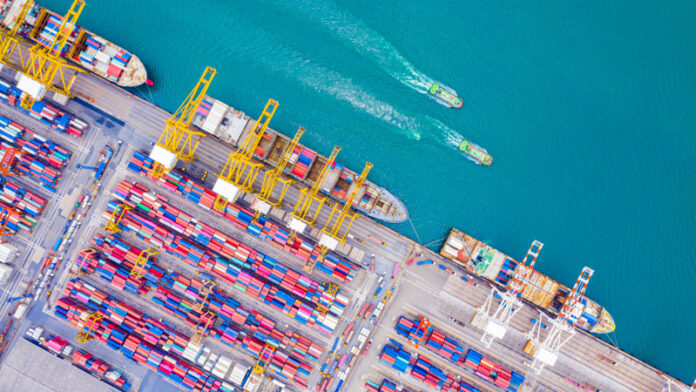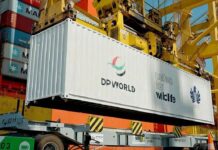
Container freight rates on major headhaul trades out of India have continued to drop in November amid export demand growth challenges, according to an analysis of market data by Container News.
On the westbound India-Europe trade, average spot rates for loads from West India [Jawaharlal Nehru Port (JNPT)/Nhava Sheva or Mundra Port] to Felixstowe/London Gateway (UK) or Rotterdam in April have slipped to US$1,650 per 20-foot container and US$1,900 per 40-foot container, from US$1,750 and US$2,050, respectively, at the end of November.
Similarly, for West India-Genoa (the West Mediterranean) bookings, rates have fallen to US$1,800/TEU and US$1,950/FEU, from US$1,950 and US$2,150, the CN analysis shows.
On the eastbound leg (imports into India), rates from base ports in Europe have also cooled month on month. The analysis put spot rates for bookings from Felixstowe/London Gateway or Rotterdam to West India at US$900/TEU and US$1,000/FEU, down from US$1,000 and US$1,200/FEU, respectively, reported at the end of November.
For trades from the West Mediterranean (Genoa) to West India, December rates have dropped to US$850/TEU and US$950/FEU, from US$1,000 and US$1,050, respectively, reported in late November.
Spot prices on the India-US East Coast trades have further softened in November from the highs seen through July. Average rates for shipments from West India (Nhava Sheva/Mundra) to the US East Coast (New York) have declined to US$1,850/TEU and US$2,050/FEU, from US$2,200 and US$2,500 month-on-month. For Indian container loads moving to the US West Coast (Los Angeles), rates have also dropped significantly – down to US$3,100/TEU and US$3,500/FEU, from US$3,900 and US$4,800, respectively, a month ago.
Likewise, for the West India-US Gulf Coast (Houston) trades, average December rates have decreased to US$2,600/TEU and US$2,900/FEU, from US$3,500 and US$3,800, respectively, a month ago, according to the CN analysis.
Rates on the US East Coast-West India trades (return leg) have remained relatively steady month-on-month, hovering at US$1,100/TEU and US$1,500/FEU. Rates from US West Coast to West India have also seen no significant changes from the end-November levels, hovering at around US$1,200/TEU and US$2,000/FEU, data indicates.
Average rates from the US Gulf Coast to West India have cooled from November averages – down to US$1,600/TEU and US$2,200/FEU, from US$1,900 and US$2,700, respectively.
Carrier rates on intra-Asia trades out of India have continued to be in negative territory, on most port pairings, the CN analysis found. For West India-Yantian (South China), the analysis put average rates in April at US$30/TEU and US$40/FEU, and for West India-Tianjin (North China), carriers are accepting bookings at as low as US$5/TEU and US$10/FEU.
For West India-Shanghai (Central China) trades, rates have also remained in negative territory, at as low as US$5 per TEU or FEU.
Also, for West India loads to Singapore, carriers are also accepting bookings at as low as US$5/TEU or FEU.
October rates for West India-Jebel Ali (Dubai) bookings have sunk month on month, to US$75/TEU, from US$400, and US$150/FEU, from US$600.
Meanwhile, India’s merchandise export trade by value saw a 5% decline year-over-year in November, after a strong rebound in October.
The Federation of Indian Export Organisations (FIEO) said market conditions remain challenging for exports due to geopolitical tensions and supply chain disruptions.
“Rising tensions between Israel and Iran have led to logistics challenges as most of our trade to Europe, Africa, CIS [Commonwealth of Independent States] and the Gulf region happens through the Red Sea route or the gulf region,” FIEO president Ashwani Kumar said in a statement.
According to Kumar: “The challenges with regard to trade finance still remains the key for the MSMEs [micro-small-and-medium enterprises] as it is really impacting the competitiveness of Indian products in the global markets.”
FIEO believes: “The urgent and immediate need of the hour is to take steps on the liquidity front with deeper interest subvention support and extension of interest equalisation scheme for at least five years, creating a predictable business environment for the exporters.”
The industry group went on to add: “Conclusion of some of the key FTAs [free trade agreements] including with the UK, Peru, Oman and Sri Lanka, should soon see the light of the day, which FIEO have been urging to the government for quite some time now.”
This article was written by Jenny Daniel, Global Correspondent





